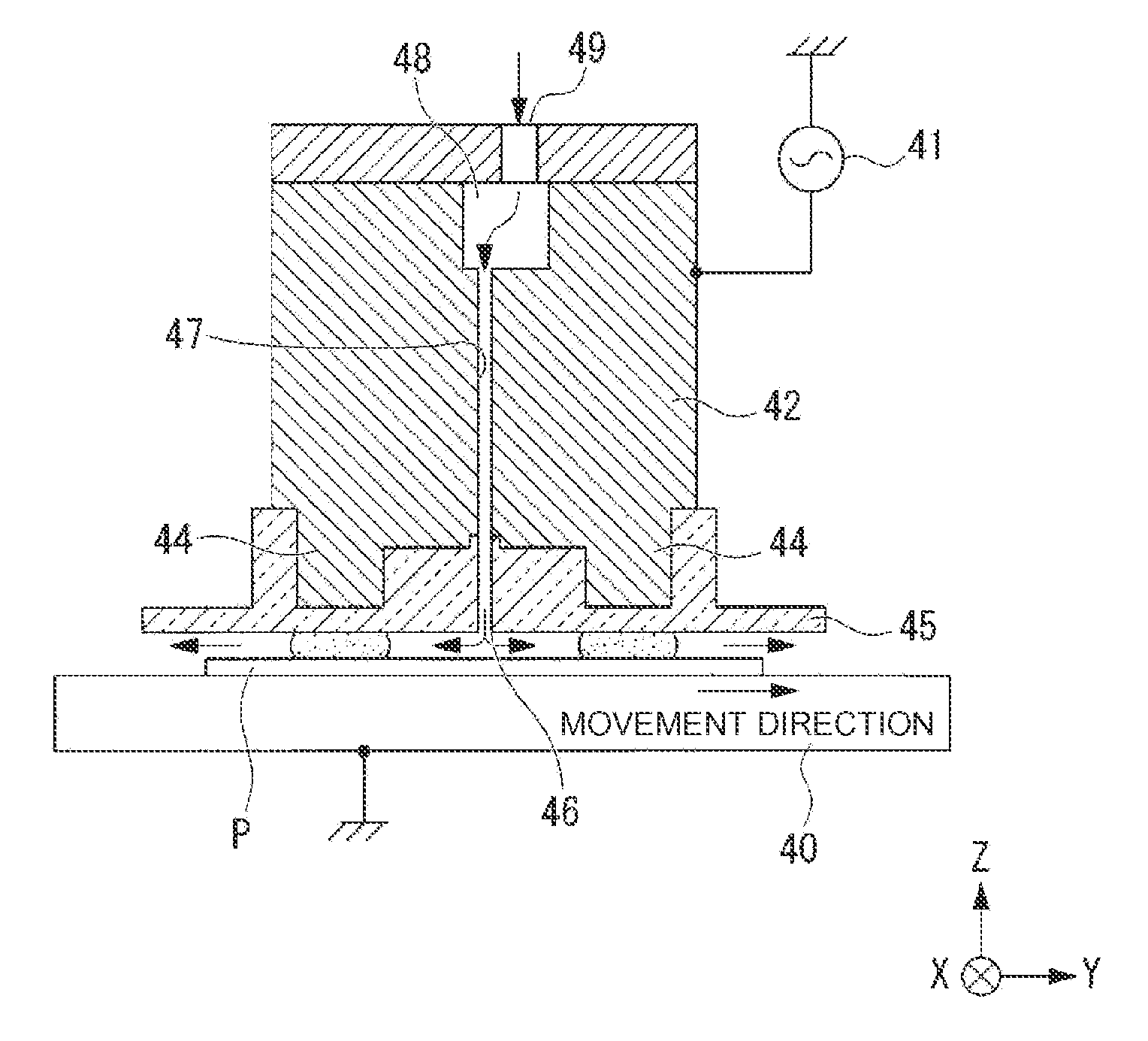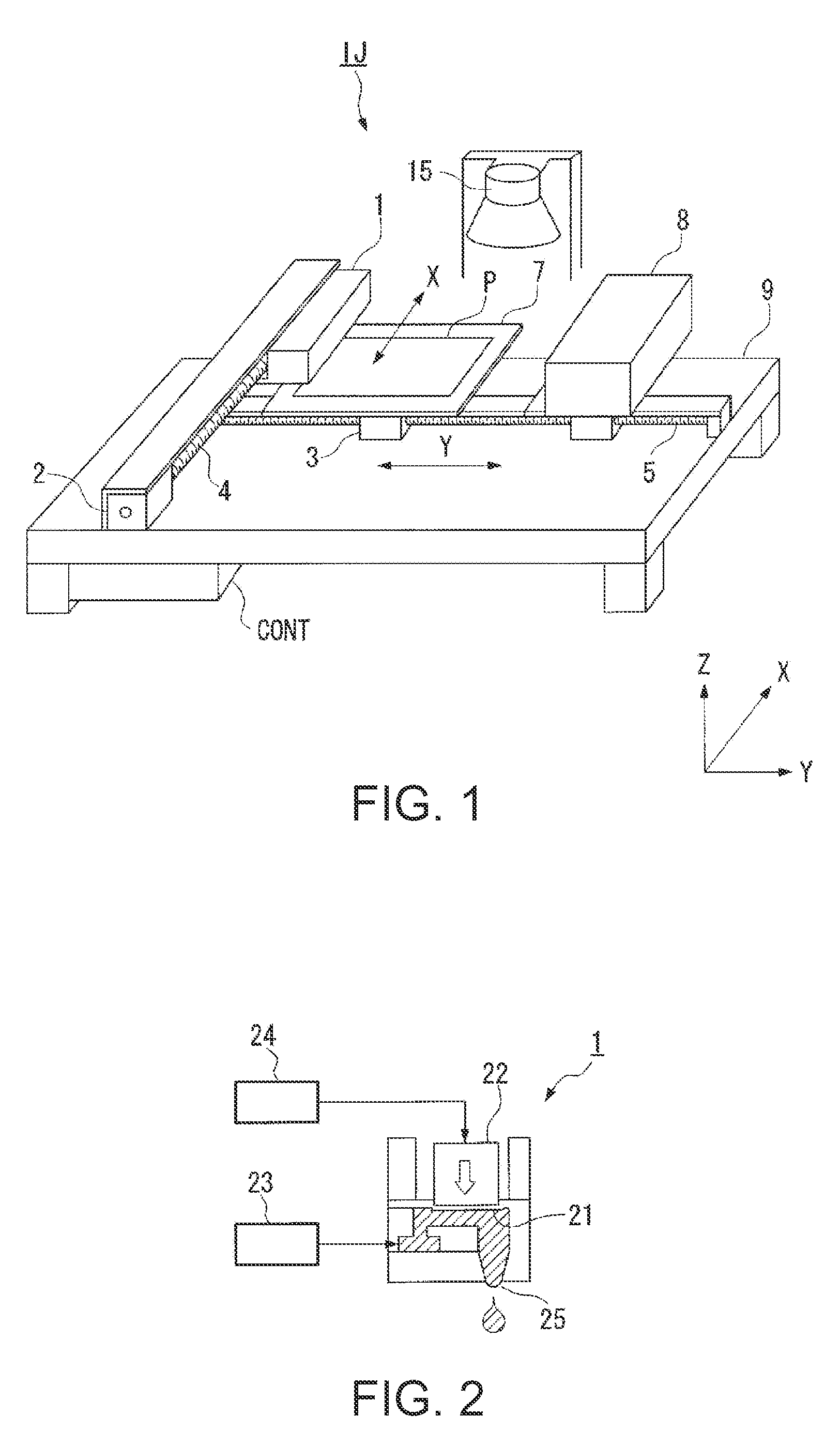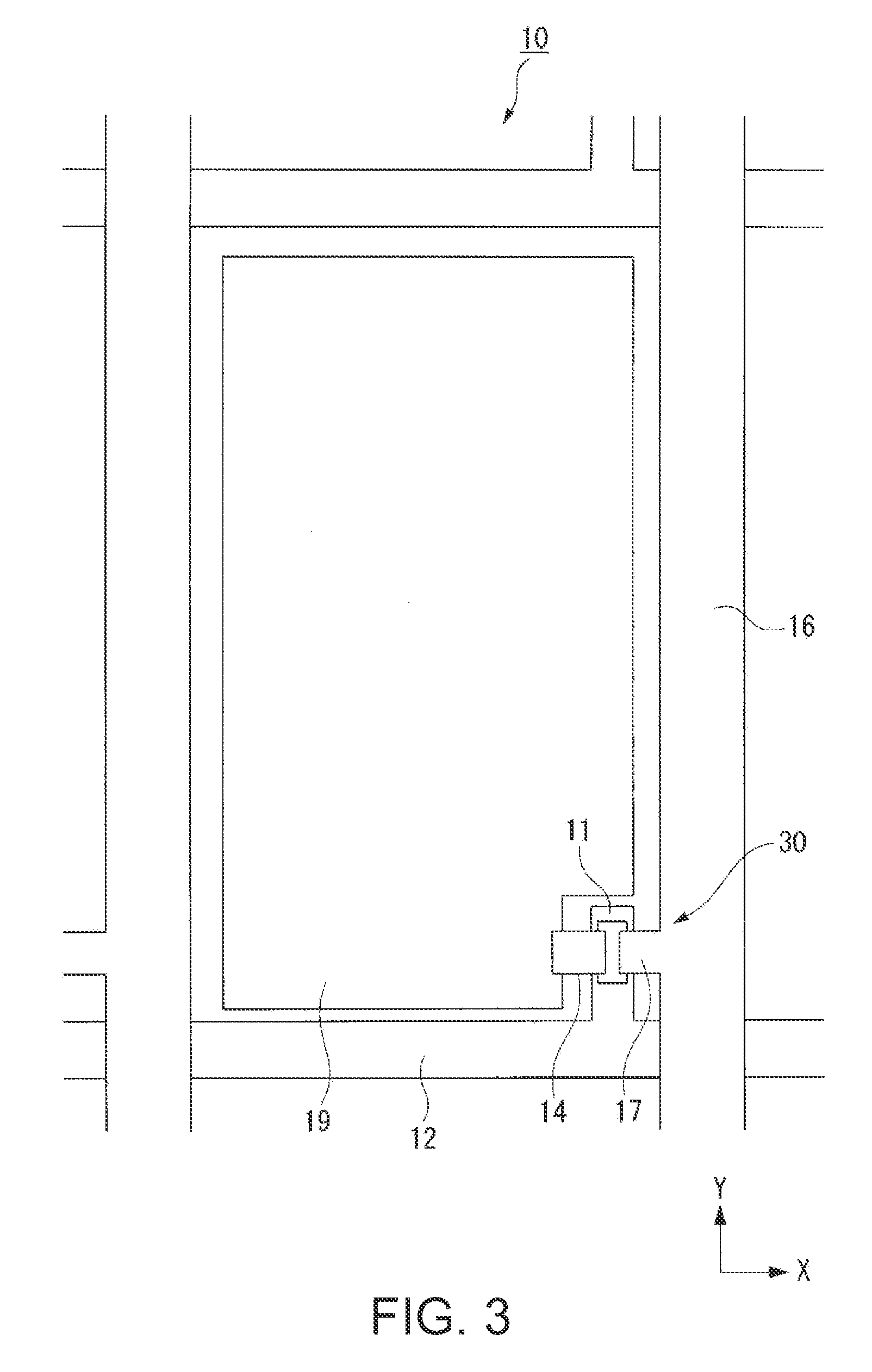Method of forming bank, method of forming film pattern, semiconductor device, electro optic device, and electronic apparatus
a technology of film pattern and bank, which is applied in the direction of photomechanical equipment, instruments, photosensitive material processing, etc., can solve the problems of poor continuity, the developer cannot penetrate the portion to be developed and removed, and the productivity of the development is affected, so as to reduce the lyophobic property and the productivity of the development. , the effect of reducing the lyophobic property
- Summary
- Abstract
- Description
- Claims
- Application Information
AI Technical Summary
Benefits of technology
Problems solved by technology
Method used
Image
Examples
first embodiment
[0054] First an embodiment in which ink (functional liquid) for wiring pattern (film pattern) containing conductive micro particles is discharged as droplets from a nozzle of a droplet discharging head by a droplet discharging method so as to form a wiring pattern (film pattern) in a concave section, namely in a region partitioned by the banks, formed on a substrate corresponding to the wiring pattern, as the method of forming a film pattern according to one embodiment of the invention, will now be described.
[0055] Here, as the ink (functional liquid) for wiring pattern, a dispersion liquid containing conductive micro particles dispersed in a dispersion medium is used. In this embodiment, as conductive micro particles, metal micro particles containing at least one of gold, silver, copper, aluminum, chromium, manganese, molybdenum, titan, palladium, tungsten, and nickel, these oxides, and micro particles of conductive polymers and superconductors are used. The surface of these condu...
second embodiment
[0113] Next, another embodiment in which the method of forming a film pattern according to one embodiment of the invention is applied to a method of forming a wiring pattern (film pattern) will be described.
[0114] This embodiment differs from the above embodiment in that the exposure to UV radiation (process of UV irradiation) shown in FIG. 5C and the exposure to light (process of exposure to light) shown in FIG. 5D are performed at the same time.
[0115] Namely, in the embodiment, a lyophobic treatment is applied to the surface of the bank film 31 to form the lyophobic layer 37 on the surface as shown in FIG. 5B, and thereafter the exposure to UV radiation and the exposure to light are performed at the same time using the single mask M as shown in FIG. 9. In simultaneous performing, a device having exposure light source for emitting light such as G line (254 nm), H line (365 nm), or I line (405 nm) and another light source for emitting UV rays in the short wavelength region having ...
third embodiment
[0120] Next, another embodiment according to the method of forming a film pattern of the embodiment of the invention will be described. In the embodiment, circuit wiring (wiring pattern) is formed on the wiring pattern (film pattern) formed in the first or second embodiment. A droplet discharging method and a droplet discharging device, and further a semiconductor device manufactured in this embodiment are basically identical to those in the first embodiment.
[0121] In the embodiment, first, a gate insulating film (the insulating film 28), an active layer 63, which is a semiconductor film, and a junction layer 64 are continuously formed on the gate wiring 12 (the gate electrode 11) as the wiring pattern formed in the first and second embodiments by a plasama CVD method, as shown in FIG. 10A. A silicon nitride film as the insulating film 28, an amorphous silicon film as the active layer 63, and n+ type silicon film as the junction layer 64 are formed by changing the gas as raw materi...
PUM
 Login to View More
Login to View More Abstract
Description
Claims
Application Information
 Login to View More
Login to View More - R&D
- Intellectual Property
- Life Sciences
- Materials
- Tech Scout
- Unparalleled Data Quality
- Higher Quality Content
- 60% Fewer Hallucinations
Browse by: Latest US Patents, China's latest patents, Technical Efficacy Thesaurus, Application Domain, Technology Topic, Popular Technical Reports.
© 2025 PatSnap. All rights reserved.Legal|Privacy policy|Modern Slavery Act Transparency Statement|Sitemap|About US| Contact US: help@patsnap.com



